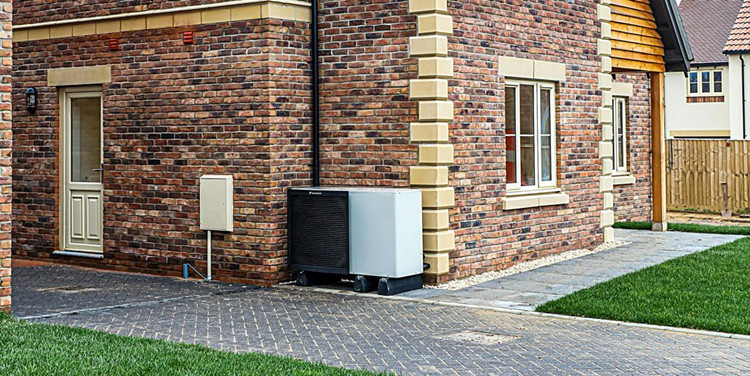Air Source Heat Pump Minimum Clearance
Heat pump installation can be complex. There are many moving parts and things to consider, not the least of which is the location of the air source heat pump. This article should help you understand what you need to consider when planning an air source heat pump (air to water) in your home.
1. Airflow
During the evaporation process in the outdoor unit, the refrigerant absorbs heat from the outside air. This process cools the air around the outdoor coil. The fan in the outdoor unit then removes the cool air produced by this heat absorption process, which is why you may feel cool air flowing out of the unit.
If the heat pump is enclosed, there will be minimal airflow and the cool air exhausted by the outdoor unit will circulate back in. This will cause the heat pump to produce a poorer output and malfunction.
To avoid this, manufacturers have strict guidelines for where to place the outdoor unit and specify clearance requirements. The specific clearance varies from manufacturer to manufacturer, with the most common being 600-1000mm in front of the outdoor unit. There is also an additional 200mm clearance at the rear, 1000mm above and 200/500mm on either side of the unit (this is mainly for servicing!).

2. Planning Considerations
If you are not in a conservation area or area of outstanding natural beauty, your heat pump system may be classed as permitted development - meaning no planning permission is required. However, there are a few caveats to this. These include:
1) The outdoor unit must not be closer than 1m from the property boundary.
2) The depth of the outdoor unit cannot exceed 0.6m3.
3) Heat pump systems can only be used for heating (not cooling).
4) Outdoor units will need to pass an MCS 020 Noise Neighbour Impact Assessment.
If you want your heat pump to provide cooling via the central heating distribution system, or your heat pump is larger than 0.6m3, then planning is unavoidable. However, if not, your choice of heat pump location will determine whether you need planning or not.
In this case, you will need to place the heat pump more than 1m from the property boundary and away from your neighbours’ ‘habitable’ windows. "Habitable" means bedrooms or living spaces (excluding kitchens, hallways, bathrooms).
3. R290 Clearances
R290, also known as propane, is one of the refrigerants used in air conditioning outdoor units.
Heat pump systems. Leomon and its aroTHERM plus range most commonly use this refrigerant.
For safety reasons, the R290 (and the outdoor unit) needs to be away from any windows, openings or electrical equipment. These clearances are 500mm from the top of the heat pump and 1000mm from the bottom.
Get more help
Hopefully this gives you a rough guide on how to install a heat pump. This should be used to give you an initial idea and should always be checked by an MCS certified installer. If you would like more information on heat pump installation, please contact us. Our heat pump experts will give you the best advice.





